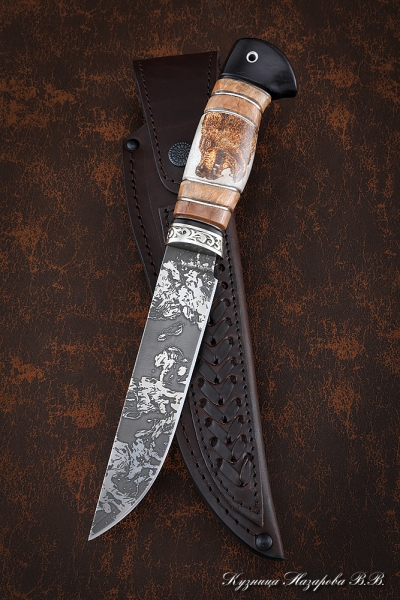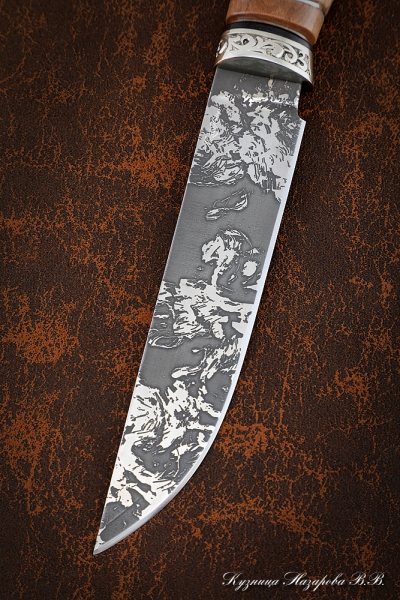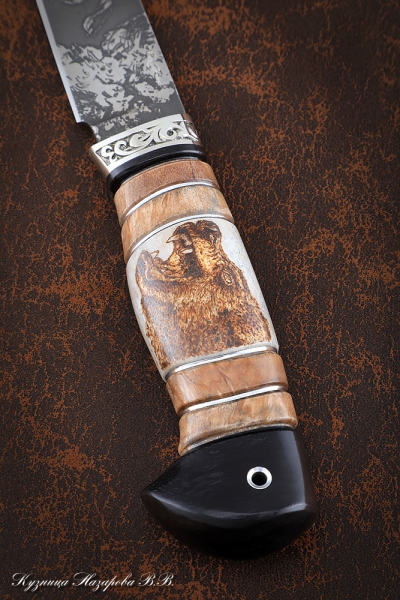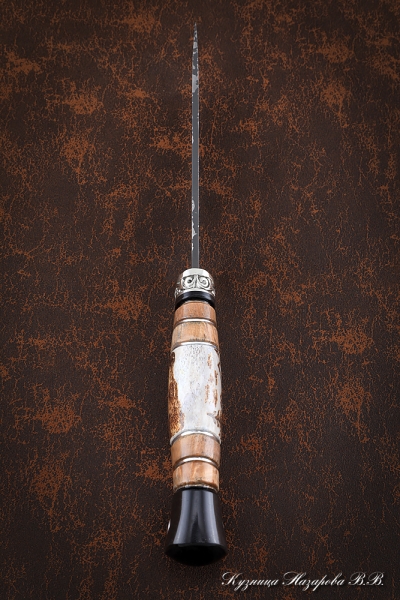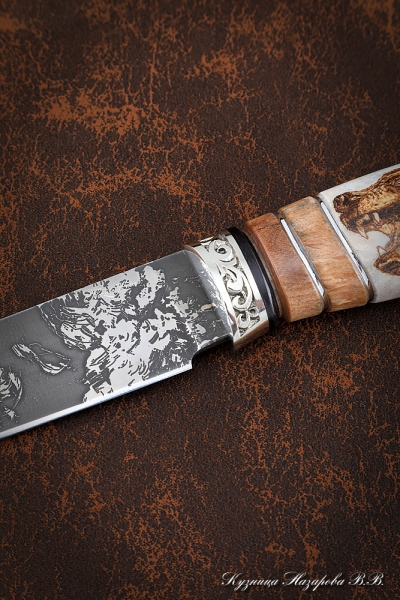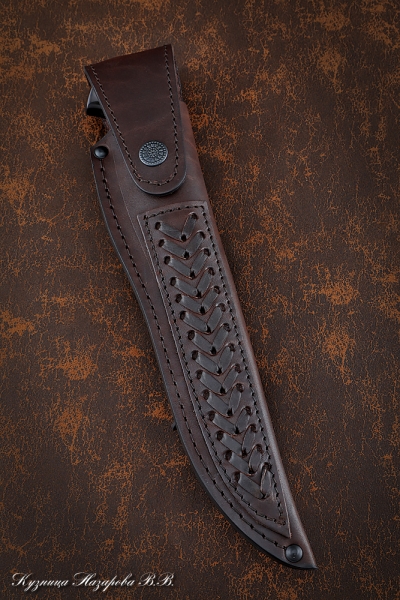- Главная
- Online knife shop
- By type of steel
- D2 steel knives
- Zasapozhny knife D2 handle Karelian birch elk horn
Zasapozhny knife D2 handle Karelian birch elk horn
Zasapozhny knife D2 handle Karelian birch elk horn
- Blade steel tipeD2
- Материал рукоятиКарельская береза, Резная кость
- Lengtn blade (os)155 mm
- Witdth blade (os)31 mm
- Толщина клинка3.5 mm
- Lengtn handle (os) 125 mm
- Hardness (HRC)64
- Product weight, gram150
- SheathLeather
- КонструкцияФиксированные
- Форма клинкаNormal Blade
Blade steel: D2 (hardness 64 HRC)
Handle: Karelian birch and carved bone (moose horn)
Blade: normal blade shape, parameters and versatility
Scabbard: genuine leather
Ease of maintenance and maintenance
A leather knife is a product with a rich history, originally conceived for concealed carry and lightning—fast extraction in a difficult environment. Artyom Osipov's modern reading and mastery imbues the knife with collectible charisma. The combination of D2 steel and an exquisite handle makes each piece unique, which is especially appreciated among connoisseurs of unique items and fans of traditional crafts
.
This knife is ideal for hunters, fishermen, lovers of active tourism and connoisseurs of handmade collectibles. If you are looking for a reliable tool with charisma that will not only be practical, but will also adorn your collection, this knife will become your indispensable companion. However, for use in extremely humid, aggressive environments or jobs requiring absolute moisture resistance and maximum impact resistance, it is better to consider other options.
Detailed analysis of the properties and features of the knife
The knife is equipped with a blade made of D2 tool steel with high hardness (64 HRC). This guarantees excellent wear resistance, long-term sharpness retention and high cutting edge strength even during active use. The D2 is renowned for its abrasion resistance — the blade retains its working edge for a long time, even after intensive cutting operations. However, as semi-rusting grade steel, D2 requires regular maintenance: although it is more resistant to corrosion than carbon steels, prolonged contact with moisture and organic matter can cause stains or traces of rust, so it is recommended to wipe and store the knife dry after use.
The unique combination of natural materials not only makes the handle look truly exclusive, but also provides an excellent grip. Karelian birch is valued for its density, strength and beautiful texture, and inserts of carved bone (elk horn) give the product the status of a handmade collector's knife. This handle holds well in the hand even during prolonged operation, however, for extremely wet conditions it is better to avoid prolonged wetting — natural wood and bone require careful care to preserve aesthetics and performance properties. The embossed shape and materials prevent slipping, ensuring a secure grip in most practical scenarios.
The classic "normal blade" shape, 155 mm long, 3.5 mm thick and 31 mm wide, is universal for most household and travel tasks. This geometry provides a balanced combination of penetration and cutting control. It is an excellent choice for cutting, slicing, woodwork and performing precision manipulations. The blade of this shape is optimal for hunting, fishing, tourism, expeditions and daily use as an auxiliary tool.
The classic leather sheath securely locks the knife and protects both the blade and surrounding objects from damage. Such an accessory is an essential element of traditional equipment, emphasizing the handmade work of the master.
Due to the high hardness and wear resistance of the D2, the knife requires rare sharpening, even with regular use, but if necessary, sharpen the blade — it is recommended to use high-quality abrasives. To preserve the aesthetics and structure of the natural handle, it is important to periodically wipe it and, if desired, treat it with protective compounds for wood and bone. After cleaning, the blade should be wiped dry and lubricated with anti-corrosion oil for long-term storage.
Optimal application conditions and limitations
Unique differences and historical associations
Care recommendations
Summary of the final recommendation








